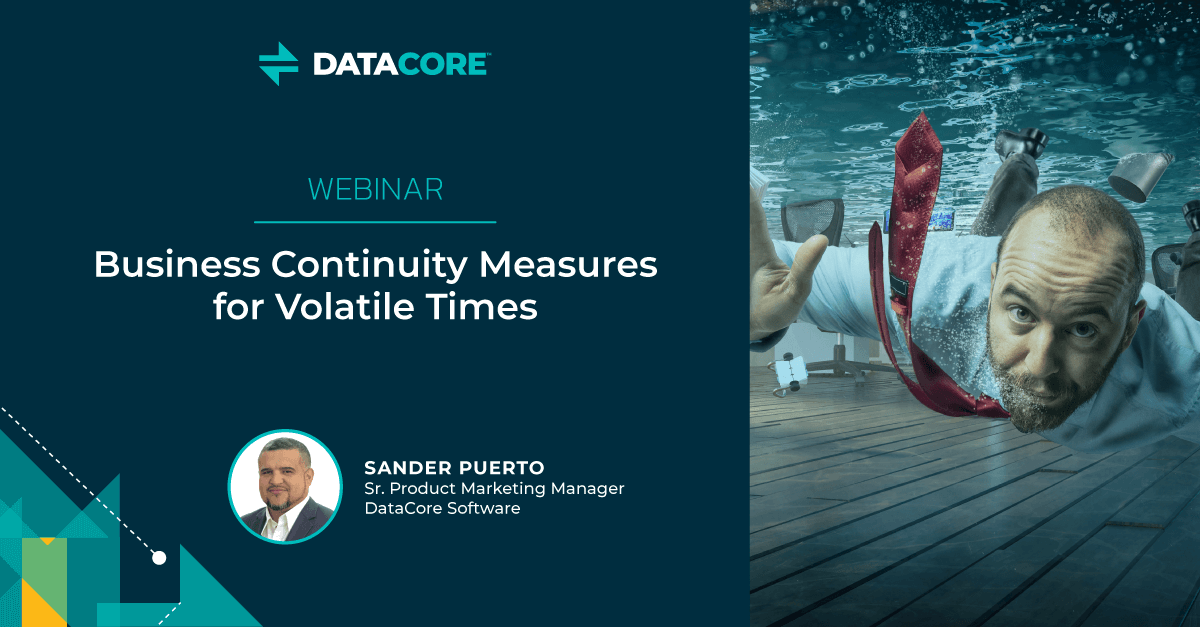A stretched cluster, sometimes called a metro-cluster, is a deployment model in which two or more host servers are part of the same logical cluster but are in separate sites, buildings or geographical locations some distance apart—generally within a metropolitan area. Should one site experience a major outage, the other can immediately take over its duties, and business goes on without any detectable disruption. Once the outage is addressed, the workloads are again rebalanced across facilities.
In order to operate as a cluster, the shared storage on which the hosts rely must be reachable from both sites. However, a central storage system won’t do. It would represent a single point of failure for the entire system, defeating the redundancy the cluster was intended for. This means each location must always have separate physical storage systems that constantly keep each other in sync, presenting the same data regardless of which location it is accessed from. Synchronous replicatiom (mirroring) between the two storage devices makes that possible.
Stretched clusters are becoming more popular as geographical redundancy becomes a requirement for specific business models that must be up 24×7 even when one of its data centers is temporarily out of commission. This is one of the most difficult BC/DR architectures to design as there are multiple elements that must be present for it to work in lockstep.
Not only do you need host operating systems or hypervisors to support multi-site high availability, but your network must support it as well. The most common stretched cluster designs are made for Oracle, VMware ESXi, SQL databases and Windows servers. Due to its nature of high workload applications, the storage and network need to be very fast as data is moving across both sites in real time. Any sort of round trip delay beyond 5 milliseconds could cause latency-sensitive applications to time out or run unacceptably slow. The speed of light and the availability of high-speed connectivity thus limits the inter-site separation to around 100 miles.
The last common denominator here is the storage, and it typically requires high-performance arrays at both ends to be alike. Different models even from the same manufacturer typically use very different synchronous replication protocols—or lack them altogether. This requirement creates a huge problem for data centers that have a mixed storage environment and are looking to incorporate stretched clusters.
The first hurdle is determining whether the existing storage can support stretched clusters and what to do with those that don’t. The next hurdle is coming up with the money to buy separate metro-cluster licenses for all existing storage that can adequately replicate the data. Those licenses can be prohibitively expensive for all but the most affluent of organizations.
IT leaders often find themselves forced to choose one homogenous storage system for both sites that is metro-clustering capable. It doesn’t end there. The selected storage must also provide all of the enterprise-level storage services the organization needs to keep business running. Add disaster recovery support to the checklist of must haves, and you have your work cut out.
Initially, selecting a storage vendor appears to be simple, yet it can turn into a nightmare on the long run as yesterday’s performance requirements have skyrocketed and now it’s time to invest in a faster, denser and more modern storage solution with all the bells and whistles.
The next obvious move is to buy the newer and faster option and simply replace the old SAN with the new modern SAN. Technically that’s a forklift and replace. Can you say total overhaul?
Wait a minute, you don’t have to do that. There is a way you could keep both the existing SAN and the new SAN and save some money at the same time. Wouldn’t that be better?
Heck, if you can save your company a few hundred thousand by prolonging the lifespan of the existing storage and buying only what’s necessary for expansion, then I call that a win-win situation. Your organization gets the performance they need, they keep some cash in the bank and you get to be the hero. You might even get promoted or at least get a raise for proposing this great idea.
DataCore™ Software-Defined Storage enables stretched clusters to work seamlessly across heterogeneous storage equipment, regardless of the manufacturer. It has been the hallmark of our offering for over a decade.
This more desirable and cost-effective approach gives you the flexibility to insert and remove any SAN on either site non-disruptively, and not worry about compatibility issues. In fact, whichever storage you pick does not have to support stretched clusters natively because DataCore SDS turns into the new layer of enterprise storage services responsible for synchronous mirroring and automatic failover/failback.
It is time to go away from the old business continuity methodologies and welcome the new method of keeping your data accessible on two sites using the storage of your choice managed by DataCore SDS.
I encourage you to discover how DataCore SDS can improve your BC/DR efforts. Register for the webinar below. I’m sure you will find it extremely valuable and timely.
